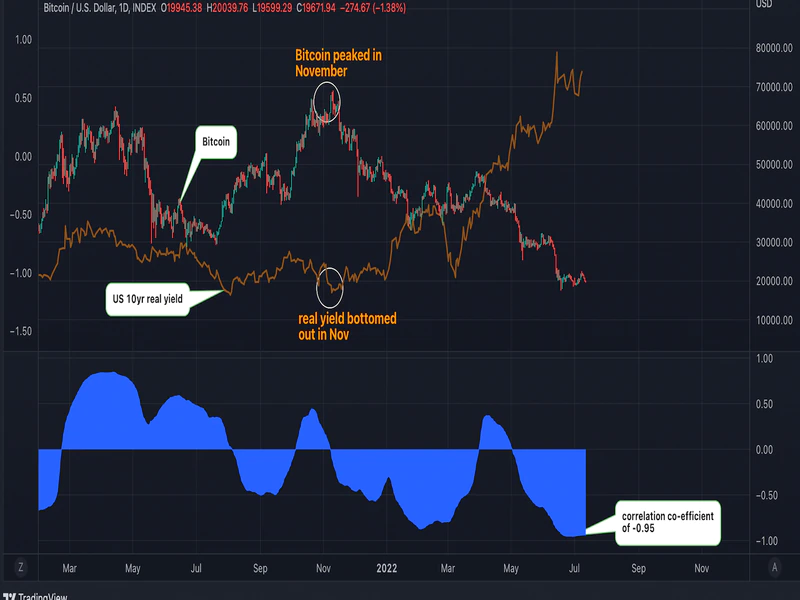Bitcoin (BTC)’s correlation with Invesco QQQ, a popular exchange-traded fund (ETF) that tracks the tech-heavy Nasdaq 100 Index, has reached a high of 0.894 in nearly three years, according to a chart by CNBC’s Dominic Chu. Well what does it mean? Here are the details…
Bitcoin and Nasdaq stocks correlation hits record
It is worth noting that 1 point will mean a complete correlation. The fact that the largest cryptocurrency is trading almost like any other tech stock undermines the “inflation hedge asset” narrative that took the fledgling asset to new record highs last year. cryptocoin.comAs we have also reported, Bitcoin is treated as another speculative investment, rather than being treated as a legitimate store of value.
The trading relationship between Bitcoin and the Nasdaq is close to the tightest level over last 3 years…below is the correlation between #btc & $QQQ…
(via @ycharts)@cnbc pic.twitter.com/XVDoYb4UES
— Dominic Chu (@TheDomino) July 12, 2022
The massive decline of the cryptocurrency came with tech stocks. The Nasdaq Composite Index lost 22.4 percent of its value. Thus, it recently recorded its worst quarter since 2008. Meanwhile, Bitcoin recorded its worst quarterly performance since 2011 after falling by as much as 58 percent. The chart mentioned above shows that convergence with the Nasdaq is starting to accelerate as institutional investors buy into the “inflation hedge” narrative after the US Federal Reserve unleashed unprecedented monetary support.
Due to the double blow of negative technical signals and negative macro backdrop, Bitcoin price is expected to continue falling. The Fed is expected to announce another rate hike this month, after the latest jobs report surprises to the upside.
Correlation with bond yield also increased
Meanwhile, the 90-day correlation coefficient between Bitcoin and the 10-year US inflation-indexed security bond yield fell slightly behind the -0.95 record reached at the end of June. The record inverse, or negative correlation, means that Bitcoin is moving in the opposite direction of its inflation-adjusted return. A correlation coefficient is a number between +1 and -1 that represents the linear interdependence of two variables or data sets. If the correlation coefficient is -1, it means that the relationship between the two variables is negative 100 percent of the time. If the number is +1, the two securities move in the same direction.

A positive real yield means that the bond payment exceeds market-based measures of inflation expectations. Therefore, the higher the actual return, the less incentive there is to earn returns on other assets such as cryptocurrencies, stocks, and gold. So it’s no surprise that Bitcoin, tech stocks, and gold have all been beaten this year after the increase in real yield. Real yields rose more than 172 basis points to 1.72 percent this year, thanks to the Fed’s determination to drain liquidity with rapid rate hikes and balance sheet escape to combat skyrocketing inflation.







